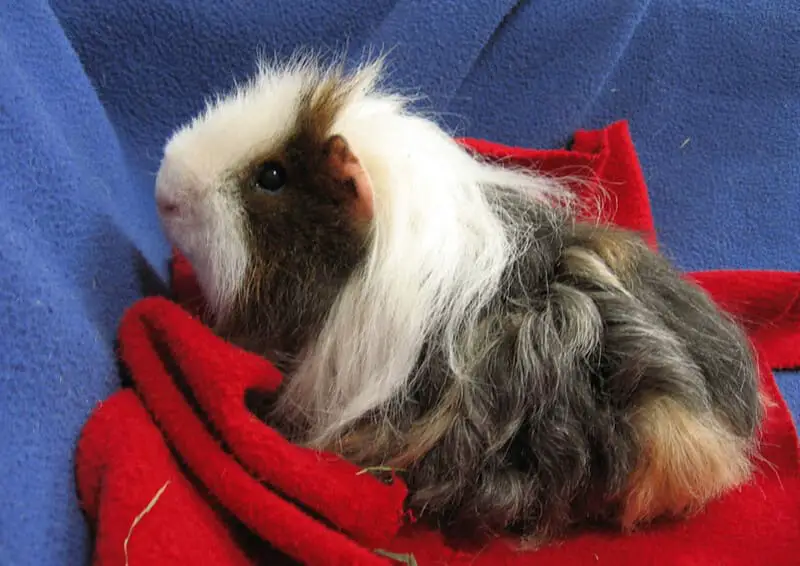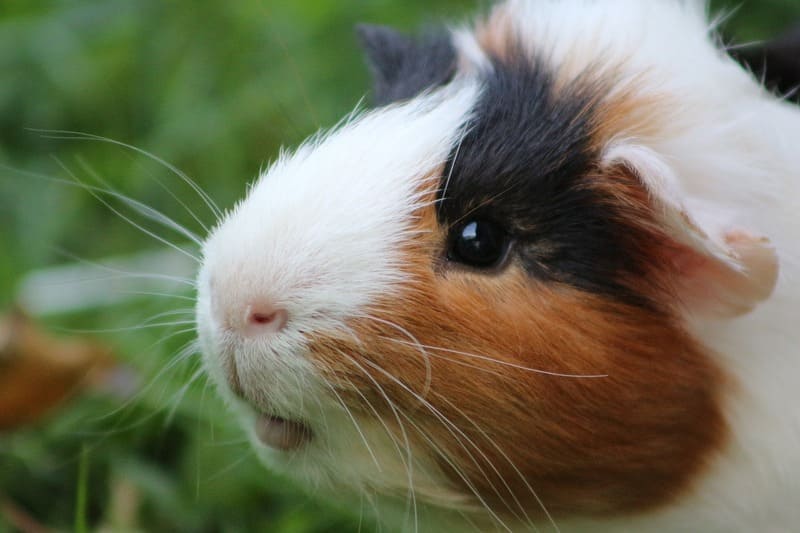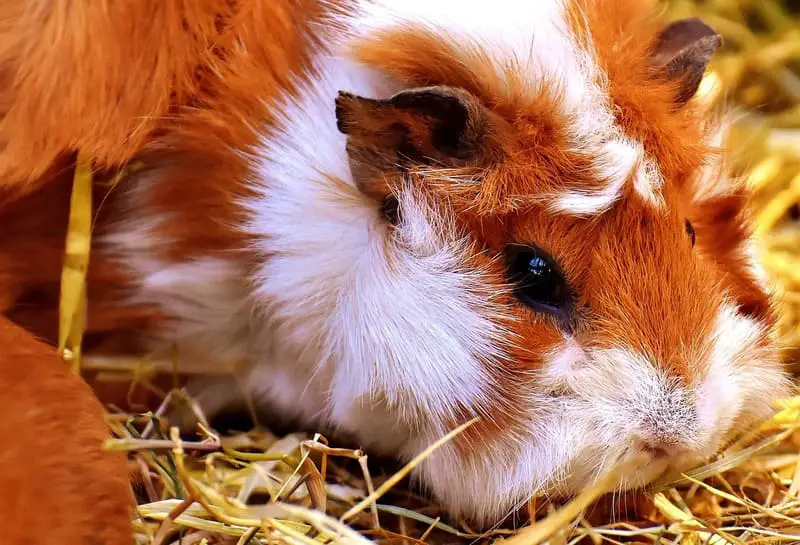Guinea pigs, those charming and gentle rodents, have become popular pets due to their affectionate nature and manageable size. These small creatures are not only endearing but also relatively low-maintenance when it comes to grooming. However, they do require some care to maintain their health and well-being. In this comprehensive guide, we will delve into the grooming needs of guinea pigs, discussing the various aspects of their grooming routine, including fur care, nail trimming, and other essential practices to keep your furry friends happy and healthy.

Understanding the Natural Grooming Habits of Guinea Pigs
Before we dive into the specifics of grooming guinea pigs, it’s essential to understand their natural grooming habits. Guinea pigs are meticulous groomers themselves and spend a significant part of their day cleaning and maintaining their fur. They use their small, dexterous front paws to comb through their hair and remove debris or dirt. Despite their diligent self-grooming, they may still require some assistance from their owners to ensure they stay in the best condition.
Guinea pigs are generally clean animals, but factors like age, health, and living conditions can affect their grooming habits. For instance, older guinea pigs may have difficulty reaching all areas of their body due to arthritis or other age-related issues. In these cases, human intervention becomes crucial to maintaining their hygiene.
Fur and Coat Care
The fur of a guinea pig is one of its most distinctive features, coming in various lengths, textures, and colors. Proper fur care is essential for keeping your guinea pig healthy and comfortable. Here are some essential grooming practices for their fur:
1. Brushing
While guinea pigs are excellent self-groomers, they may benefit from occasional brushing. Brushing helps remove loose fur, dirt, and debris that can accumulate in their coat. Regular brushing can also prevent matting, which is more common in long-haired guinea pigs.
- Long-haired vs. Short-haired Guinea Pigs: Long-haired guinea pigs, such as Peruvian and Silkie breeds, require more frequent brushing to prevent matting. Short-haired breeds, like the American guinea pig, require less frequent brushing but can still benefit from occasional grooming.
- Frequency: For long-haired guinea pigs, brushing two to three times a week is recommended. Short-haired guinea pigs may only need brushing once a week or less.
- Brush Selection: Use a soft-bristle brush designed for small animals. Ensure it is gentle and does not scratch or irritate their skin.
- Brushing Technique: Brush in the direction of hair growth, being gentle and patient to avoid causing discomfort or stress. Start with short sessions and gradually increase the duration as your guinea pig gets used to the process.
2. Bathing
Guinea pigs generally do not require regular baths, and bathing them too often can strip their skin of natural oils, leading to dryness and skin issues. However, there are specific situations where a bath may be necessary:
- Medical Reasons: If a guinea pig has a medical condition or skin problem that requires treatment, a veterinarian may recommend occasional bathing with a medicated shampoo.
- Contamination: If a guinea pig gets into something dirty or contaminated, like a urine-soaked area, a bath may be necessary. In such cases, consult your vet for guidance on proper bathing techniques and products.
- Matted Fur: In the case of severely matted fur, a bath can help soften and detangle the knots, making it easier to trim or brush out the mats.
When bathing a guinea pig, use lukewarm water, and ensure the environment is calm and secure to reduce stress. Use a gentle, specially formulated guinea pig shampoo, and dry them thoroughly afterward to prevent chilling.
3. Mat Removal
Mats can be problematic for guinea pigs, particularly those with long hair. Mats occur when tangles or knots form in the fur, which can be uncomfortable and lead to skin issues if left unaddressed. Removing mats requires patience and care:
- Detangling: Carefully work on the mat using a soft brush or your fingers. Be gentle to avoid hurting your guinea pig. Some mats may be so severe that you need to cut them out.
- Trimming: If you have difficulty detangling or the mat is too close to the skin, consider trimming it. Use blunt-nosed scissors or grooming shears designed for small animals. Exercise extreme caution to avoid cutting the guinea pig’s skin.
- Prevention: Regular brushing and grooming can prevent mats from forming in the first place. Be especially diligent with long-haired guinea pigs to avoid matting.
4. Seasonal Shedding
Guinea pigs undergo seasonal shedding, primarily in the spring and fall. During these times, they may lose more fur than usual, and it’s essential to help them manage shedding by:
- Increasing the frequency of brushing to remove loose fur and prevent mats.
- Ensuring a balanced diet rich in vitamins and minerals, as nutrition plays a vital role in the health of their coat.
- Providing extra hiding spots and soft bedding to keep them comfortable during these times.

Nail Care
Nail trimming is a crucial aspect of guinea pig grooming, as overgrown nails can lead to discomfort and health problems. Guinea pigs have continuously growing nails that, if not kept in check, can become too long, making it difficult for them to walk properly. Here’s how to maintain your guinea pig’s nails:
1. Checking Nail Length
Regularly inspect your guinea pig’s nails to determine if they need trimming. Guinea pig nails are usually light in color, making it easier to see the quick—the blood vessel inside the nail. Do not cut into the quick, as this can cause bleeding and pain.
- If the nails are clear, you can see the pinkish quick. Cut just a small amount of the nail to avoid damaging the quick.
- For dark or black nails, you may not see the quick as easily. In these cases, cut small amounts at a time, being cautious not to go too deep.
2. Tools for Nail Trimming
To trim your guinea pig’s nails, you will need:
- Guinea pig-specific nail clippers (also suitable for small animals like rabbits).
- A small styptic powder or cornstarch to stop bleeding in case you accidentally cut into the quick.
3. Nail Trimming Technique
Here’s how to trim your guinea pig’s nails:
- Have someone hold your guinea pig gently and securely, so they don’t squirm during the process.
- Hold the guinea pig’s paw gently but firmly.
- Using the nail clippers, trim a small portion of the nail, being cautious not to cut into the quick.
- If you accidentally cut too deep and the nail bleeds, use styptic powder or cornstarch to stop the bleeding.
Note: If you are unsure about how to trim your guinea pig’s nails, consult a veterinarian or an experienced guinea pig owner for guidance. Professional grooming services are also available for those who prefer not to do it themselves.
4. Frequency
The frequency of nail trimming can vary depending on your guinea pig’s individual needs. In general, you should check their nails every 3-4 weeks. However, some guinea pigs may require more frequent trimming if their nails grow quickly, while others may need less frequent attention.
Ear and Eye Care
Although guinea pigs are proficient groomers, their ears and eyes may require occasional cleaning:
1. Ear Cleaning
Guinea pigs have small, delicate ears that are susceptible to wax buildup. To clean their ears:
- Use a soft, damp cloth or a cotton swab to gently wipe away any visible wax or debris from the outer ear.
- Do not insert anything into the ear canal, as it can damage the eardrum. If you suspect an ear infection or excessive wax buildup, consult a veterinarian for professional cleaning and treatment.
2. Eye Cleaning
Guinea pigs may occasionally develop eye discharge, which can dry and form crusts around their eyes. To clean their eyes:
- Use a soft, damp cloth or cotton ball to gently wipe away any discharge or crusts from the eye area.
- If eye discharge persists or appears abnormal, consult a veterinarian for further evaluation, as it may indicate an underlying health issue.

Dental Care
Guinea pigs have continuously growing teeth that require proper care to prevent dental issues. Their teeth naturally wear down through chewing on hay and other fibrous foods. Here are some tips for maintaining your guinea pig’s dental health:
1. Diet
Ensure your guinea pig’s diet consists of high-quality hay, fresh vegetables, and guinea pig pellets. These foods provide the necessary fiber and abrasive action to keep their teeth properly worn down.
- Hay: Offer a variety of hays, such as timothy, orchard grass, or meadow hay, to provide different textures for chewing.
- Vegetables: Fresh vegetables like kale, parsley, and carrot tops can also help with dental wear.
2. Observe Eating Habits
Keep an eye on your guinea pig’s eating habits. If you notice a decrease in appetite, difficulty chewing, drooling, or weight loss, it may indicate dental problems. In such cases, consult a veterinarian for a dental examination.
Anal Gland Care
Guinea pigs have anal glands that can occasionally become clogged or infected, leading to discomfort and health issues. While not a daily grooming task, it’s essential to be aware of the signs of anal gland problems and seek veterinary care if necessary. Signs of anal gland issues in guinea pigs may include:
- Swelling around the anal area.
- Discharge or bleeding from the anal area.
- Changes in behavior, such as restlessness or discomfort.
If you notice any of these signs, consult a veterinarian for a thorough examination and treatment. Attempting to address anal gland issues at home can lead to further complications.
Regular Health Checkups
In addition to grooming, regular health checkups are vital to ensure your guinea pig’s well-being. A veterinarian experienced in guinea pig care should perform these checkups at least once a year. During these visits, the vet will:
- Examine your guinea pig’s overall health.
- Check their teeth for signs of overgrowth or dental issues.
- Assess their weight to ensure they are maintaining a healthy size.
- Address any specific concerns or questions you may have regarding your guinea pig’s health.
Conclusion
Guinea pigs are relatively low-maintenance when it comes to grooming, thanks to their natural grooming habits. However, they may still require some assistance to maintain their fur, nails, and overall hygiene. Regular brushing, nail trimming, and periodic checks of their ears, eyes, and dental health are essential aspects of guinea pig grooming. Paying attention to these grooming needs ensures that your guinea pig remains happy, healthy, and comfortable throughout their life. Additionally, routine veterinary checkups are crucial for monitoring their overall well-being and addressing any health concerns that may arise. With proper grooming and care, your guinea pig will thrive as a cherished and content member of your family.
